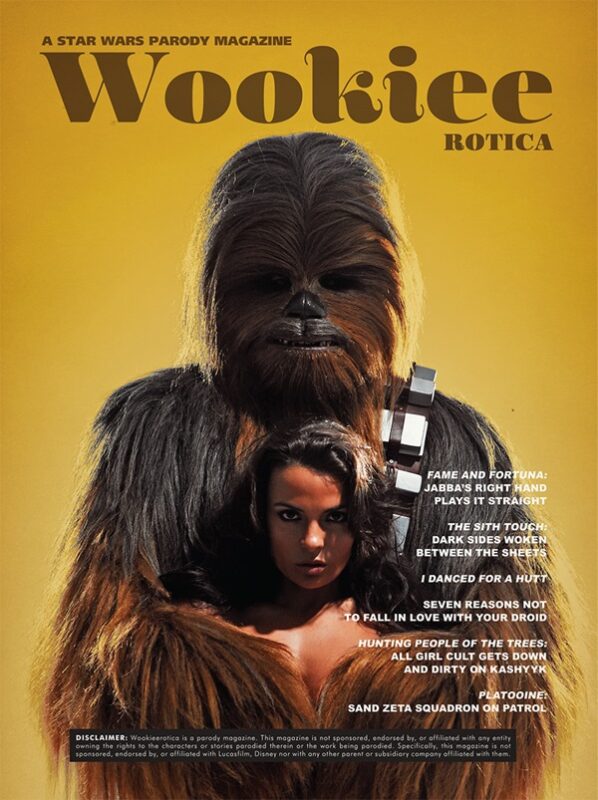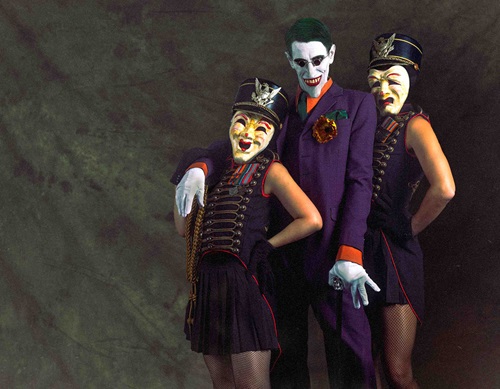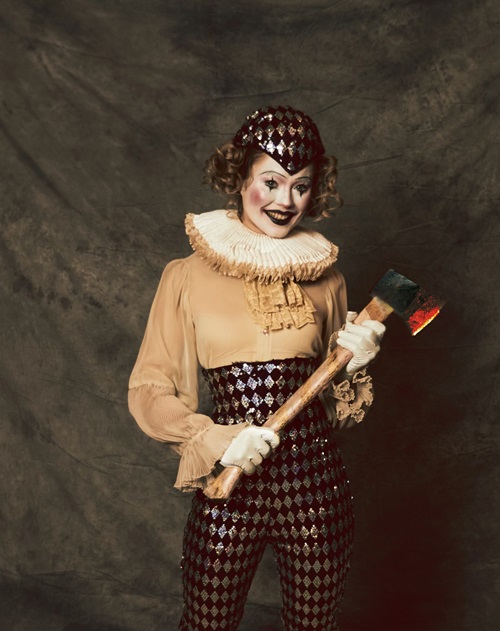By Ethlie Ann Vare
HOLLYWOOD, CA (July 16, The Hollywood Times) Russall S. Beattie — they misspelled “Russell” on his birth certificate! — is a pop culture magpie. He sees a shiny bauble of visual storytelling and he adds it to a multi-layered metaverse that combines history and comic books, neo-futurism and steampunk, striptease and opera. His latest outing is Batette Follies of 1939, which is playing through the end of July at the Montalban Theatre in Hollywood.
“If Guillermo del Toro, HR Giger and Alexander McQueen put on a Batman show set in the 1930s, and Prince and Tom Waits and the Cramps did the music” is how Beattie thumbnails it. He’s the writer, director, co-producer, casting director, production designer, costume designer…. and that’s just the tip of this dynamo’s iceberg.
“I’m building three shows at the moment. One’s a musical based on the rise and fall of Arnold Schwarzenegger, called Arnie. After that, one more burlesque show, based on the creation of Marvel Comics. I do have to head back to Australia to finish a feature film that’s in post-production. Then I will start working on a new book, and after that, I want to open up a specialized art venue in Vegas. Oh, and I plan to set up a film facility in Gundagai, a country town in Australia.”
Plus, there’s also a planned cycle of reimagined golden-age horror from the female gaze, all directed by women… it may sound like a lot, but I wouldn’t bet against this 41-year-old Sydney native. He has already owned a club, a small theater, a record label and a publishing house. He’s managed bands, made movies, produced stage shows and written books. He came to LA touring The Empire Strips Back, a Star Wars parody burlesque revue that started out as a one-off event for 100 people but became a national theatrical phenomenon selling 70,000 tickets in Australia alone. It had a healthy run at the Montalban back in 2022, which ignited an ongoing association that allows Beattie to combine the mythos of Hollywood history with actual Hollywood history.

He waves a tattooed arm around the green room, where we are perched on an Art Deco couch: “This was the Huntington Hartford, and the Doolittle, the Vine Street Theatre… Cecil B. deMille was, like, the artistic director here,” he says with genuine reverence. “Josephine Baker started her first headlining American tour here when it was the Palace Theatre — there’s photos of Marilyn Monroe in the front row. I grew up watching films which were shot a stone’s throw from here. Walt Disney lived less than a mile away when he first came to California.
“This town was built by artists, people who wanted to create stories and pass on those stories. I wanted to build something here, to create something in Hollywood for Hollywood. I have no plans for touring this anywhere else. It’s made for this theater.” The Montalban’s Gil Smith is Beattie’s producing partner on Batette Follies of 1939.
Batette actually started as a coffee-table art book titled GOTHAM 1919-1939. Its conceit is that it’s a history of the real people behind the Batman myth, heroes and villains in the Depression-era visual mold of Elliot Ness and John Dillinger. The images made amazing set-dec.

“It is a weird concept, a bit meta. The book is meant to be the real story, and there are exhibits in the theater foyer based on the ‘real’ stories in the book. The stage show is set in that time period, but we use current music and current dancing. It’s all in a universe.” Because, after all, most pop culture was made by magpies in the first place.
“Batman was created in 1939, but he was copied from radio serials like Zorro and The Shadow,” says Beattie. “The Joker character was completely lifted from [1928 expressionist film] The Man Who Laughs. And then you had Robin, who was called Robin because Robin Hood was the biggest film out at the time. It’s just different artists interpreting it for every generation.” Beattie grew up watching Charlie Chaplin and Buster Keaton. This stuff is oxygen to him.

By the way, you can’t buy GOTHAM 1919-1939 for the same reason the show can’t use its original title, Gotham Follies of 1939. Maybe Disney’s legal department (they own Star Wars) decided they could live with a bunch of “this is a parody” disclaimers on Empire Strips Back, and HBO got over their distaste about an earlier erotica effort Beattie called Dames of Throne. But DC Comics was intransigent. So never mind that Gotham was a city in England since the 1600s, DC owns the name and Beattie can’t use it on his stage show or his book.

“We’ve been informed we have to destroy the copies. So we’re asking for people’s help because there’s a lot of copies to destroy: We’re giving them away to people at the show for free, and we trust everyone to destroy them at their convenience. Legally, we’re doing everything they asked us to do.”
A magpie, and perhaps a bit of brat. He made a 1970s Playboy magazine pastiche with Star Wars characters, parody whisky ads and all. He turned Kermit the Frog into Yoda – or vice versa. But you have to take big swings in Hollywood, and that’s what Beattie is committed to doing. “I can have a great show in Australia. But I wanted to put it through the trial of fire and make sure I could do it in Hollywood, because these people are gonna judge me more than anyone else. But if I can entertain the entertainers, then my craft grows and gets better.
“Hollywood was always about telling stories. Now it’s about appeasing the shareholders. The audience is not the driving force anymore, it’s the stock price. At the end of the day, it’s still money makes the world go ‘round, which is where the audience has power. The audience needs to stand up.”
Beattie has faith in the local audience, which is why he will sometimes do an end run around the industry establishment. “The way I justify it is you can’t dominate the public space with entertainment and just turn it into a product. These are our stories. We are the ones who made these characters popular, the fans and the audience. We have to be able to have a say in what we consume.”
His work, he admits, may not be for everyone. There are half-naked ladies, after all. But the best artifacts are not supposed to be for everyone. “That’s the problem today,” he says. “They’re making product and they want it to be for everybody. When you make something for everybody, you’re making it for nobody.”





